| Umělec 1998/8 >> An Artist’s Report from America | Просмотр всех номеров | ||||||||||||
|
|||||||||||||
An Artist’s Report from AmericaUmělec 1998/801.08.1998 Jiří Surůvka | report | en cs |
|||||||||||||
|
"How I discovered America... It was thanks to money from George Soros whom I wish to extend my gratitude. I thank also to everybody at the Soros Center for Contemporary Arts, Jiří Bednařík who bought a painting from me two days before my flight so that I could buy the ticket, thanks go also to Maya Cain who took care of me in San Francisco and helped me lose all illusions of former hippies. Some of them are really just mere beggars just like here. But let me summarize everything and then I’ll get to the details. I should perhaps publish those in (Czech art magazine) Detail to balance things out.
Unfortunately, almost nobody is interested in art in America any more. Here, too, it’s mostly about money. During my trip from California to the East Coast, the only good galleries I came across were in Brooklyn. San Francisco is much worse off. “They hate artists,“ said one gallerist in Chelsea and he was right. I think that city officials in S.F. are so scared that the ’60s could come back that they chased all the artists out of the city. Only Lawrence Ferlinghetti stayed, bribed by them. This year, he became the first person ever to be awarded the San Francisco Award and a street is named after him, Via Ferlinghetti. He never got kicked out of his building where his bookstore is located. Electrical appliances stores in the entire city bear the name of this famous City Lights bookstore. Plus the master took to painting at the end of his life. He is painting with a youthful drive concentrating on themes typical for retired progressive American intellectuals (e.g. current Living Theater happenings), i.e. guys on electric chairs marked as victims of capitalism, etc. The fact that these “progressive“ martyrs usually brutally murdered a number of innocent people is not at all mentioned in the work. Anyway, L.F. is unfortunately the biggest rocker in the whole city of San Francisco. Local cultural life is mostly oscillating around a few rock clubs, and a number of jazz and hiphop clubs. To my disappointment, Residents and Y. Biafra, too, entered a latent phase of their careers and nothing is heard of them. So the only big events of this past Fall in San Francisco were the Chicago musical and a concert of the Czech band Už jsme doma. Fortunately, the state is taking care of arts in two local institutions. The first one, SFMOMA, is exhibiting notoriously known chez d’oevres but in a different light: Keith Haring and Alexander Calder. Somebody else may write about them elsewhere. The other institution, Yerba Buena Center for the Arts, had finally something interesting to offer. Before when I had visited Fort Mason (former military base), I was amazed by Mexican folk art dealing with Halloween and in Yerba Buena this talent for the bizarre and hyperbole exploded with all its power. The ground floor was showing professional Mexican artists inspired by folk ceramics work, papermash figures of skeletons and masks decorated with bright colors. This all was used in various installations with mostly social and anti-American content. It was not really anti-American but rather anti-corporate, i.e. anti-capitalist. Long time ago, a certain Senator bearing the same last name as the action artist McCarthy would definitely consider the works anti-American. Just to name one installation out of the bunch created by a group of artists which was called The (Re)Generation Project of Galerie de la Raza: McMuertos. With their funny design anagrams they bore references to the network of cafeterias serving ground burgers so often attacked by the youth, they connected this symbol of American consumerism with dirty politics and death. But the best part, I thought, was a separate section of the exhibit showing video art. It’s title was Mexcelente and the subtitle read Hybridity and Travel in Art from Mexico City and Beyond alias El Super Show de puro POP, television from Greater Mexico. It included classic videoinstallations, such as Francis Al˙s presenting a loop with a person leading a drove of sheep in a circle around a “pestilential“ column on one of the main squares in Mexico City. The video’s title was Patriotic Tales. Quite expressive were videos by Miguel Calderón (documentary of fight among high-school girls on a school yard which was entitled Kitty Fight). Then there were two large-scale video projections on opposite walls of a dark room made by Yoshua Okón and called Tragaverga with two young ladies cursing you with rather obscene gimmicks. The rest of the videoinstallations were ranging from hate to latent adoration of the American consumerist sufficiency. I most enjoyed an edit of some obscure cabaret where, say, a young guy was kneeling on a skateboard, riding back and forth murmuring something about his love for travel while being interrupted by amateur opera singer and a fat big-teethed Mexican who, wearing a home-made armor, was descending from a lunar unit made out of paper and a step ladder saying “I love United States of America“. The other-national character of Yerba Buena was emphasized by a parallel exhibition of young Israeli art organized in cooperation with the Jewish Museum of San Francisco and curated by Tami Katz-Freiman and Amy Cappellazzo. It was called Desert Clichés: Israel Now - Local Images Examine Israeli Identity (it was actually very similar to an exhibition of contemporary Jewish art in a museum of the same title on New York’s Fifth Avenue). Young Israeli artists seem to be fed up with wars, mandatory military service and delimited field democracy. They shift former taboos in an ironic way: Holy places, moving frontiers, military heroism, state of emergency and issues concerning Jewish and Arabic identity. So this was done in two days and couldn’t get more art in the city of beat and hippie generation. I bought a rod and started fishing and visiting people. I couldn’t go swimming in San Francisco as the sea is very cold even on hot summer days. The city is very beautiful but only from afar, especially from the other side of the Golden Gate Bridge, the Marine Headlands Coast. Yes, this is the place where the Chalupecký Award winners are being sent. Just like anywhere else in this part of the world, artists live where soldiers used to dwell before. Army - avant-garde of the avant-garde! I met a commune of several international artists there including Ilona Németh of Nové Zámky, Slovakia, who is the latest award winner of a prize going to young Slovak artists. This was much better atmosphere than the one in those vain, luxurious studios for under-average artists in the City where I stayed. During the Open Studios, Headlands became one of the few places that were visited by actual gallerists and people seriously interested in arts. I envied Ilona this interest that centered around her. Where I was living, it seemed as if I went back in time to a communist Dílo art shop at the beginning of the ’80s with people from the neighborhood judging whether a piece of work looks real and whether they could paint the same thing too. To satisfy my host’s romantic idea of an Eastern painting artist overwhelmed by the dried out spirit of “flower power“, I painted a few pictures inspired by a) the catalogue of protecting workwear - the American work cycle - and b) by the Headlands Marine catalogue containing a photograph of former U.S.Army soldiers, the predecessors of the Jidřich Chalupecký Award winners, which was called Army - Avant-garde of the Avant-garde. The stray American housewives mostly favored my self-portrait on the Golden Gate Bridge in the form of a fat larva. After all, there was a little bit of landscape in there... The good thing was that I had a Czech friend Jakub Švéda there, a Fine Art Academy student, who studied a semester at the Art Institute of S.F., perhaps the only good school here. Also one local artist by the name Scott McLoud of my age was cool, he made interesting installations and performances and curates some sort of unmaterial gallery which organizes events at different places each time. It is called The Imagine Gallery and they organized some events in the city of Ostrava, Czech Republic, since Scott has a friend there Radana Parmová. That’s all I found here. Fortunately, I had more touristic goals and I waved the Bay Area good-bye and borrowed a Chevrolet truck (made by Isuzu Motors Ltd., Japan, 1981) from my friend Tomáš Etzler of Denver who thus became one of my patrons, alongside with George Soros. I set out on a very adventurous journey eastwards since my flight back was arranged to depart from New York City. First, however, I decided to take a walk along Venice Beach (Jim Morrison used to go here and David Hasselhoff is the local bay watch). Living here is also Prague/Princeton graduate vicar Ferda L. from Ostrava-Poruba who got married here and lives in Burbank which is Los Angeles and surroundings. Art here is also weak and Hollywood is just a dirty street for tourists. Worth mentioning may only be former Bergamot Station in Santa Monica with a few mostly commercial galleries. Track 16 Gallery is the only one involved in new media as is, as they say, the Orlando Gallery in Sherman Oaks, Sharon Truax Fine Art in Venice, MoCA in downtown L.A. and MADLA (Museum of Art who director is Madla Hruza, hence the name?). MoCA featured a big exhibition of Nan Goldin photographs. Her hyperrealistic color photos of human poverty and social decay, however, usually look unreal and misplaced in such official galleries. They suggest a suspicion that the artists, after she has had enough pimps, beaten-up prostitutes and ill and dying homosexuals, takes out her golden credit card from a hideout and flees back to the world of elite to be admired by those who are responsible for this state of affairs. I went to see a few hundred studios built in a former brewery during the Open Studios in Brewery Anex, 650A S. Avenue 21 and unfortunately found nothing... In any case, it is quite remarkable that artists are not considered a mob in any American city as is the case in the Czech Republic. On the contrary, they are treated with care, have new studios built or old industrial spaces turned into spacious homes and studios. This is not as much a sign of philanthropy as of pragmatic thinking that the more artists live in a city, the more commissions there will be for them, and in effect this brings higher revenues for advertising, architectural, interior, design, film and television companies and an inflow of money to state and regional budgets. It would be good if our politicians realized this before they start babbling that we really cannot afford to support arts at the moment. Nature is the greatest work of art in America. Nevada Desert, Utah, Colorado. Hundreds of National Forests everywhere. I got invited to such a forest in North California by local Indians to see weekend dances at Grinding Rock. About three hundred people participated in a half-underground building with a fireplace in the middle and smoke exhaling through an opening in the roof. They started dancing on Friday and finished on Sunday noon. It was beautiful and after a few hours, all the dancers were in ecstasy. No alcohol and drugs. In sharp contrast to this ceremonial and noble entertainment is the desert city of Las Vegas. Soulless spending in a number of casinos, go-go bars and hotel music-halls. I spent several hours walking around at night so that I wouldn’t miss anything. I failed to miss, however, that I kept on meeting the same tourists wondering back and forth so that they didn’t miss anything. You could spend your whole life there this way and some people actually look according to that. I don’t understand that someone happens to like Disney and Vegas hotel architecture. It’s such a kitsch that only looks grand for a few hours at night. Grand looking at daylight are only Rocky Mountains and Grand Canyon. On my way to Denver, Colorado, I had to spend the night in a little town called Grand Junction where I met the only local gallerist Caole Lowry (Planet Earth and the 4Directions Gallery) and a few remarkable artists who I was vainly looking for in San Francisco only to stumble into them in Great Junction and Brooklyn. Naturally, I immediately offered cooperation between their gallery and Ostrava’s Jáma 10 Gallery. We’ll start by sending each other a postcards. That’s about all peripheral and regional artists and outsiders can afford. Thanks to my friend’s help I could stay in Denver for about a week. It is one of the most beautiful American capitals. I should not forget about little college town of Bolder which has its own municipal gallery and organizes beat poetry seminars for students. Private galleries are worthless again, similarly to those in Denver where they are chased out from the center by new baseball stadium and higher rent. It seems that only galleries offering Russian art remained, Sloane Gallery and Robischon Gallery that have partly non-profit programs. I also visited a Mexican neighborhood with two sprayer gang galleries, one of them bearing a slick name Piratos. They were only open on weekends; apparently, these young proletarian artists must make money during the week. Opposite to this space was a rock club where Tiger Lilies were playing the night I was there. I just passed through Chicago and spent a few days in Detroit. My host there was a well-known Scottish plastic surgeon Dr. Jackson. I had a chance to see the real life of the rich. The colorful autumn landscape at Lake Michigan is designated for home of the upper middle class. Its poetics reminded me of meadow at the Ostrava crematory. Neatly cut green fence and bushes were only at random disrupted by almost identical gravestones. No stores, pubs, public buildings. There were only private properties and no-trespassing signs. It was dead everywhere, no people wondering around. It wasn’t until the evening that soundless limos started arriving and pale owners were getting out of them, reminding of zombies. Detroit, too, looked very much like Gotham City from the Batman movie with its faded fame of the Ford Automobile company, conserved forever in the local automobile museum. Old and abandoned high-rises from the ’40s, dirty courtyards, famous hotels turned into cheap apartment blocks. Downtown accommodates a library and a museum rendered in brutal classicist Capitol style with inescapable gigantic frescos by Diego Riviera. Plus a five-meter statue - an enlarged arm of a local boxer. Nevertheless, the local art college is quite well equipped. The journey from Detroit to Cleveland and to New York is quite insipid with hints of industrial remains. Then came little forests and New York City - Manhattan Island just popped up suddenly. I expected to see miles and miles of concrete suburbs but I was wrong. Manhattan, again, is nicer looking from a distance than from the inside. Inside in the canyons of the streets (unfortunately, I didn’t come up with this metaphor), people and cars flow in never-ending stream. Everything makes perfect sense, the streets, the avenues, the Central Park. Its eastern (or western?) side is forming the Fifth Avenue. John Lennon once was this avenue’s victim and we all know he was liberated in quite a fatal way. All the bigger museums and galleries are located here. The same is true for the nearby Madison Avenue with the Czech Embassy if you were interested in visiting the Czech Center. You will meet three ladies there who probably ended up working there by “knowing somebody“ because nothing indicates that they are real specialists on Czech culture. East Village, SoHo, etc. are just tourist places with galleries selling artists like Warhol and Pollock at best. The more interesting galleries in Manhattan can be found in Chelsea - a neighborhood of car repair shops, gas stations and warehouses. This includes names such as Matthew Marks Gallery which was at the time I was there showing Willem de Kooning. And again, other galleries here were exhibiting Nan Goldin and Wolfgang Tillmans (Andrea Rose Gallery). My impression that the photographs are inappropriate for such shiny clean places is perfectly applicable to those galleries. Nan Goldin should rather be shown in the neighboring warehouses and car washes. The real “frontiers“ in New York live exclusively in Brooklyn. In Williamsburg, a district of Brooklyn, you can stumble across two dozens small independent galleries showing hot art without compromise. It is interesting that their peripheral look, their use of various junk, aversion to clean, sterile installation is quite similar to what is being produced in artistic periphery of Prague and other Czech cities - Ústí, Ostrava. I saw exhibitions in Sidewhow, a small room 6x4 meters packed with painting of various artists, and in Eyewash, a small two-room apartment turned into a gallery exhibiting Bruce Houston’s copy of Mondrian with a truck attached to the bottom of the frame, an installation of photographs and trash entitled Art Gone Wrong by Elisa Levy, a neon sign by Norma Markley reading “Heeheeheehehehe“ or something like that, Lisa Heyn and Bob Seng created a cabinet made out of older cabinets rendered in various colors, Paul Kuhman showed an altar painted with oil colors. But I think that such lists of works are not saying much and I don’t know the art historical slang but the art was fun, diverse, no high art yet it was made with drive. Each gallery in the neighborhood, however, was different. Pierogi 2000 Gallery, despite the Italian name, is owned by an Englishman who often shows European projects. During my visit, the gallery was showing Bob and Roberta Smith from England with their Birds are the New Fish exhibition, a white drum set, video and signs. Art Moving was another strictly non-commercial gallery showing Natalie Moore’s conceptual work, a wire sticking out of the wall here and there, that’s it. One of the Brooklyn courtyards was hiding the Holland Tunnel Art Gallery, a small hut presenting young European and American artists in site-specific projects. I saw the work of Brandon Ballengée entitled Acme.Labs, variation 3 (with the Introduction of the Fermi Worm), an installation with an artificial mutant snail and landscapes glowing in ultraviolet light, accompanied with music by Kraftwerk. I found people who helped me out a lot in New York as well. Radim Boruta from Manhattan, four Ostrava guys from Brooklyn and artist Anu Schwartz and his girlfriend Jenny without whom I wouldn’t see anything. And that’s the end of the story. I don’t remember the way back as a Russian named Serge, sitting next to me, got me drunk on the plane. I just know that he threw up on me and set off emergency alarm by smoking in the toilet. I am happy to be back with you again, my friends, and I am glad that America is again where it should be - on the other side of the world. "
01.08.1998
Рекомендуемые статьи
|
|||||||||||||
|
04.02.2020 10:17
Letošní 50. ročník Art Basel přilákal celkem 93 000 návštěvníků a sběratelů z 80 zemí světa. 290 prémiových galerií představilo umělecká díla od počátku 20. století až po současnost. Hlavní sektor přehlídky, tradičně v prvním patře výstavního prostoru, představil 232 předních galerií z celého světa nabízející umění nejvyšší kvality. Veletrh ukázal vzestupný trend prodeje prostřednictvím galerií jak soukromým sbírkám, tak i institucím. Kromě hlavního veletrhu stály za návštěvu i ty přidružené: Volta, Liste a Photo Basel, k tomu doprovodné programy a výstavy v místních institucích, které kvalitou daleko přesahují hranice města tj. Kunsthalle Basel, Kunstmuseum, Tinguely muzeum nebo Fondation Beyeler.
|







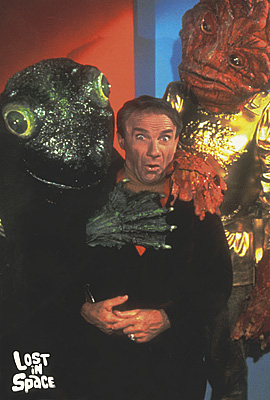
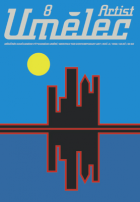

















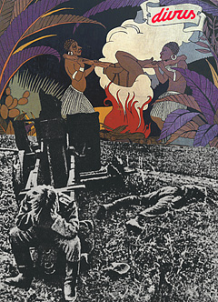






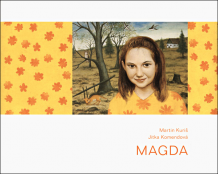




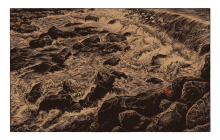
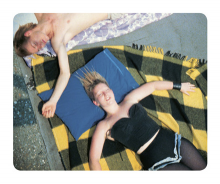

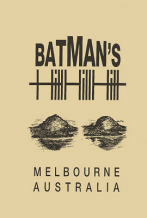


 We Are Rising National Gallery For You! Go to Kyjov by Krásná Lípa no.37.
We Are Rising National Gallery For You! Go to Kyjov by Krásná Lípa no.37.
Комментарии
Статья не была прокомментированаДобавить новый комментарий